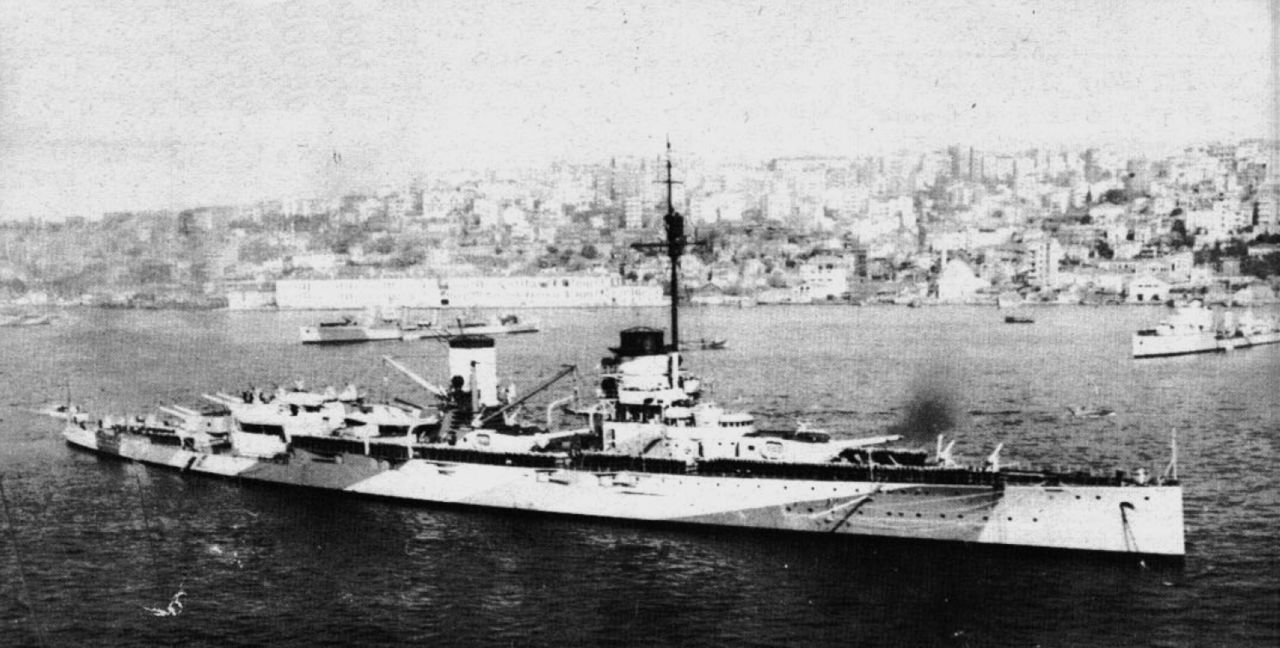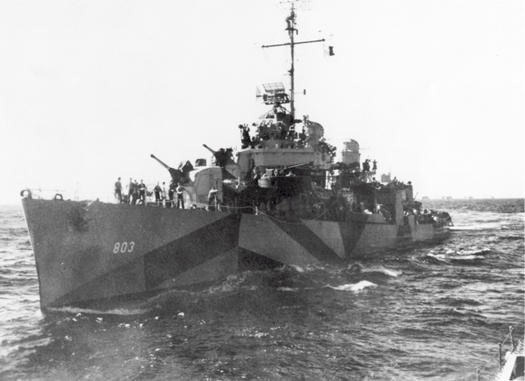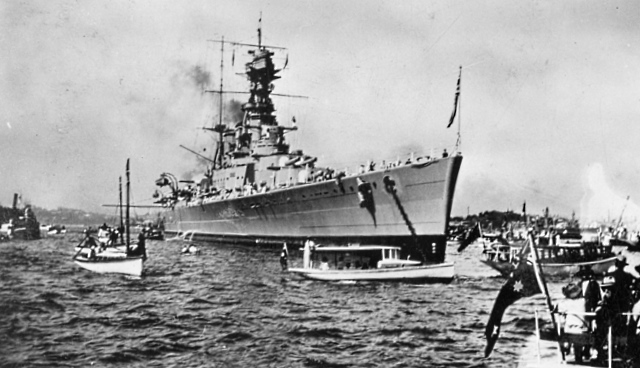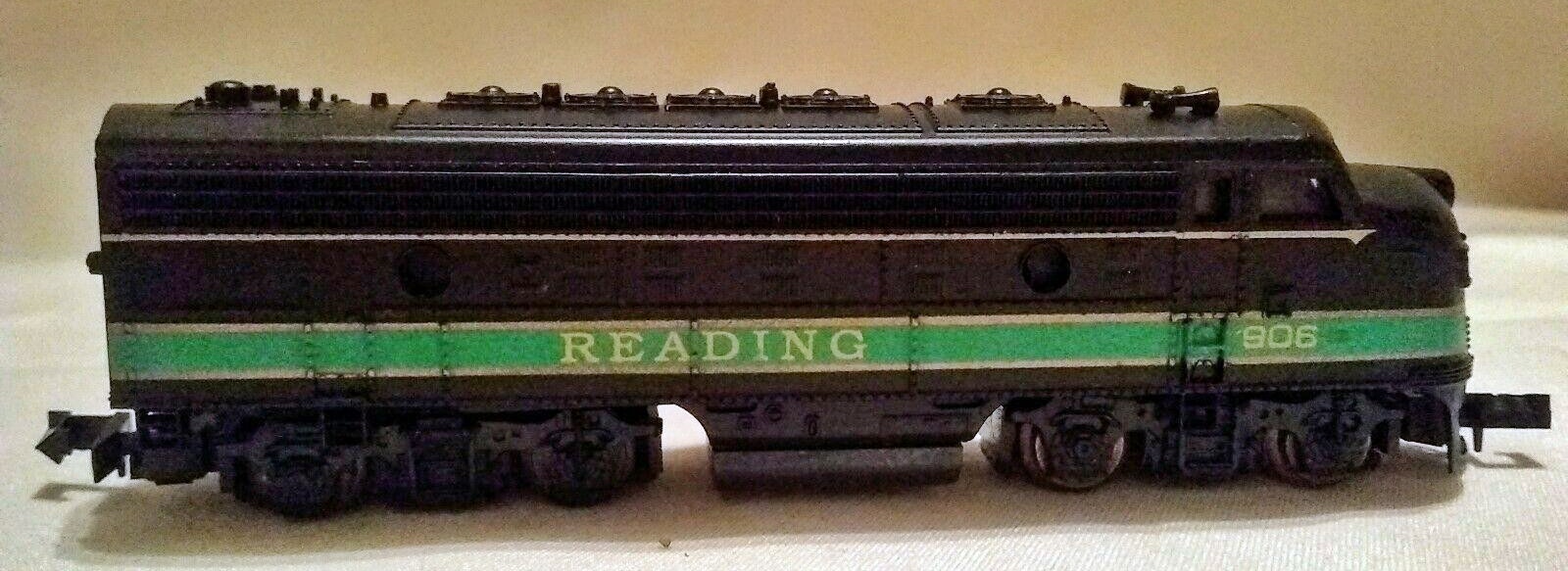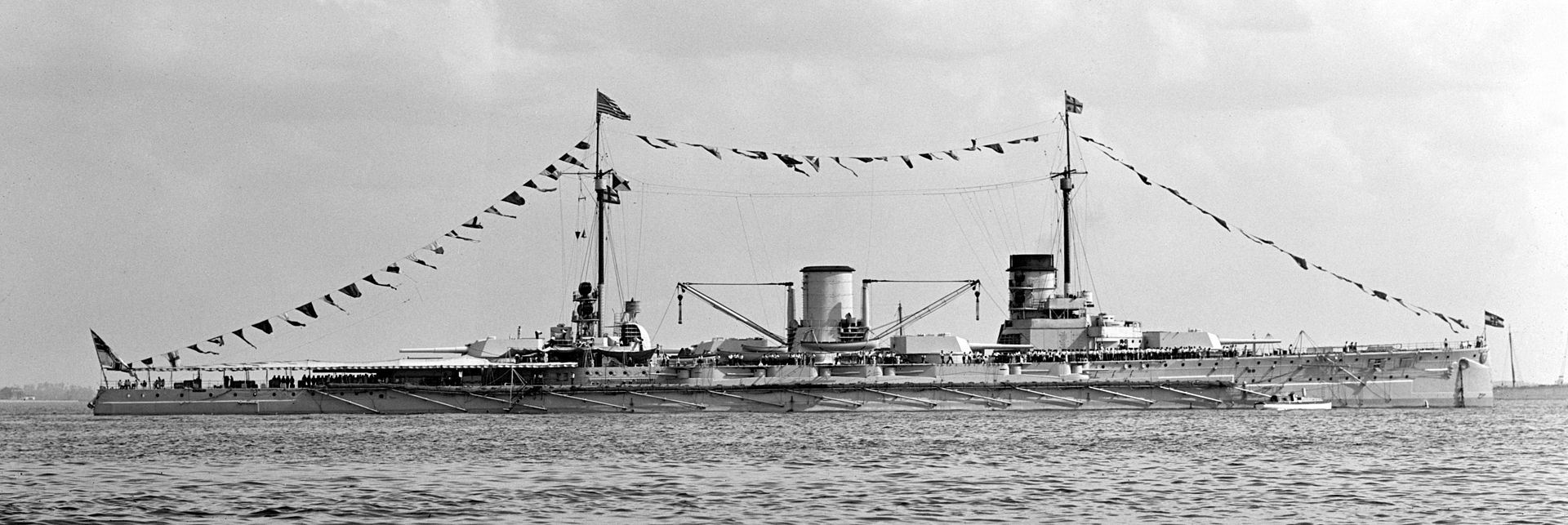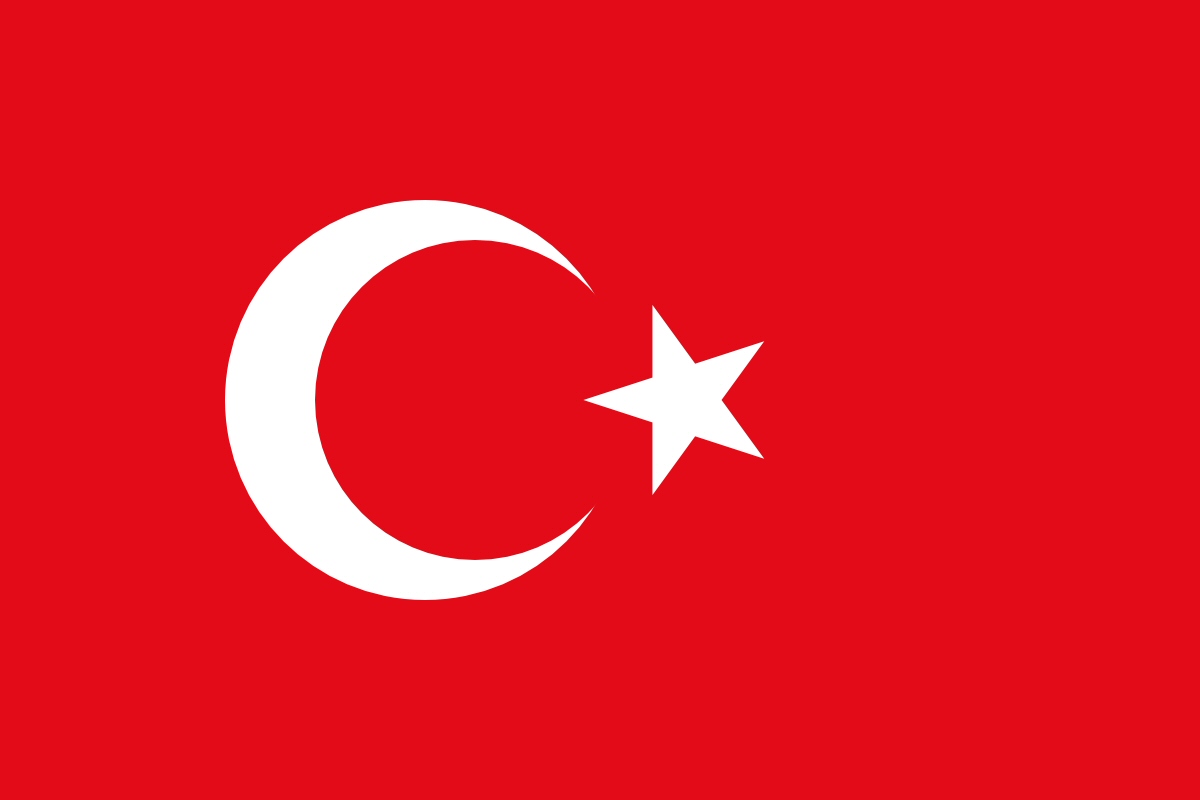Yavuz
| Name | Yavuz |
| Nationality | Turkey (Details) |
| Period | World War I |
| Type | Battleship |
| SubType | Battlecruiser |
| Warship Class | Moltke (Details) |
| Year Launched | 1911 |
| Year Commisioned | 1914 |
| Last Year Active | 1954 |
| Status | Scrapped |
| Source of Text | Wikipedia |
| Credit Link | Link |
History:
On 16 August 1914, and Goeben became the flagship of the Ottoman Navy as Yavuz Sultan Selim, usually shortened to Yavuz. By bombarding Russian facilities in the Black Sea, she brought Turkey into World War I on the German side. The ship operated primarily against Russian forces in the Black Sea during the war, including several inconclusive engagements with Russian battleships. She made a sortie into the Aegean in January 1918 that resulted in the Battle of Imbros, where Yavuz sank a pair of British monitors but was herself badly damaged by mines.
In 1936 she was officially renamed TCG Yavuz ("Ship of the Turkish Republic Yavuz"); she carried the remains of Mustafa Kemal Atatürk from Istanbul to İzmit in 1938. Yavuz remained the flagship of the Turkish Navy until she was decommissioned in 1950. She was scrapped in 1973, after the West German government declined an invitation to buy her back from Turkey. She was the last surviving ship built by the Imperial German Navy, and the longest-serving dreadnought-type ship in any navy.
In 1936 she was officially renamed TCG Yavuz ("Ship of the Turkish Republic Yavuz"); she carried the remains of Mustafa Kemal Atatürk from Istanbul to İzmit in 1938. Yavuz remained the flagship of the Turkish Navy until she was decommissioned in 1950. She was scrapped in 1973, after the West German government declined an invitation to buy her back from Turkey. She was the last surviving ship built by the Imperial German Navy, and the longest-serving dreadnought-type ship in any navy.
Class:
The Moltke class was a class of two "all-big-gun" battlecruisers[a] of the German Imperial Navy built between 1909–1911. Named SMS Moltke and SMS Goeben,[b] they were similar to the previous battlecruiser Von der Tann , but the newer design featured several incremental improvements. The Moltkes were slightly larger, faster, and better armored, and had an additional pair of 28 centimeter guns.
Both ships served during World War I. Moltke participated in several major battles with the rest of the High Seas Fleet, including the battles of Dogger Bank and Jutland in the North Sea, and the Battle of the Gulf of Riga and Operation Albion in the Baltic Sea. At the end of the war, Moltke was interned with the majority of the High Seas Fleet at Scapa Flow while the ships' fate was being discussed during peace treaty negotiations. The ships were scuttled on 21 June 1919 to prevent their seizure by the Allies.
Goeben was stationed in the Mediterranean at the start of the war; she escaped from pursuing Royal Navy ships to Constantinople. The ship, along with the light cruiser Breslau, was transferred to the Ottoman Navy soon after arrival. Strategically, Goeben played a very important role: she helped bring the Ottoman Empire into the war as a member of the Central Powers, and by acting as a fleet in being the ship prevented Anglo-French attempts to force the Bosporus, and similarly stymied a possible advance by the Russian Black Sea Fleet. Goeben was retained by the new Turkish government after the war. Only slightly modified from her original configuration, the ship remained on active service with the Turkish Navy until being decommissioned on 20 December 1950; she was stricken from the Navy register on 14 November 1954. Two years earlier, when Turkey joined NATO in 1952, the ship was assigned the hull number B70.[3] The ship was unsuccessfully offered for sale to the West German government in 1963. Without a group willing to preserve her as a museum, the ship was sold to M.K.E. Seyman in 1971 for scrapping. She was towed to the breakers on 7 June 1973, and the work was completed in February 1976.
Both ships served during World War I. Moltke participated in several major battles with the rest of the High Seas Fleet, including the battles of Dogger Bank and Jutland in the North Sea, and the Battle of the Gulf of Riga and Operation Albion in the Baltic Sea. At the end of the war, Moltke was interned with the majority of the High Seas Fleet at Scapa Flow while the ships' fate was being discussed during peace treaty negotiations. The ships were scuttled on 21 June 1919 to prevent their seizure by the Allies.
Goeben was stationed in the Mediterranean at the start of the war; she escaped from pursuing Royal Navy ships to Constantinople. The ship, along with the light cruiser Breslau, was transferred to the Ottoman Navy soon after arrival. Strategically, Goeben played a very important role: she helped bring the Ottoman Empire into the war as a member of the Central Powers, and by acting as a fleet in being the ship prevented Anglo-French attempts to force the Bosporus, and similarly stymied a possible advance by the Russian Black Sea Fleet. Goeben was retained by the new Turkish government after the war. Only slightly modified from her original configuration, the ship remained on active service with the Turkish Navy until being decommissioned on 20 December 1950; she was stricken from the Navy register on 14 November 1954. Two years earlier, when Turkey joined NATO in 1952, the ship was assigned the hull number B70.[3] The ship was unsuccessfully offered for sale to the West German government in 1963. Without a group willing to preserve her as a museum, the ship was sold to M.K.E. Seyman in 1971 for scrapping. She was towed to the breakers on 7 June 1973, and the work was completed in February 1976.
Nationality:
Turkey is a nation straddling eastern Europe and western Asia with cultural connections to ancient Greek, Persian, Roman, Byzantine and Ottoman empires. Cosmopolitan Istanbul, on the Bosphorus Strait, is home to the iconic Hagia Sophia, with its soaring dome and Christian mosaics, the massive 17th-century Blue Mosque and the circa-1460 Topkapı Palace, former home of sultans. Ankara is Turkey’s modern capital.
Item Links:
We found: 2 different collections associated with
Yavuz - Battleship
- Collection Warships: 1 different items
- Collection War at Sea: 1 different items
Item created by: gdm
on 2019-04-28 22:57:34
If you see errors or missing data in this entry, please feel free to log in and edit it. Anyone with a Gmail account can log in instantly.
If you see errors or missing data in this entry, please feel free to log in and edit it. Anyone with a Gmail account can log in instantly.


